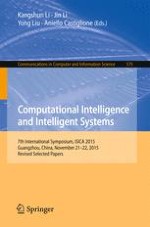2016 | Book
Computational Intelligence and Intelligent Systems
7th International Symposium, ISICA 2015, Guangzhou, China, November 21-22, 2015, Revised Selected Papers
Editors: Kangshun Li, Jin Li, Yong Liu, Aniello Castiglione
Publisher: Springer Singapore
Book Series : Communications in Computer and Information Science
